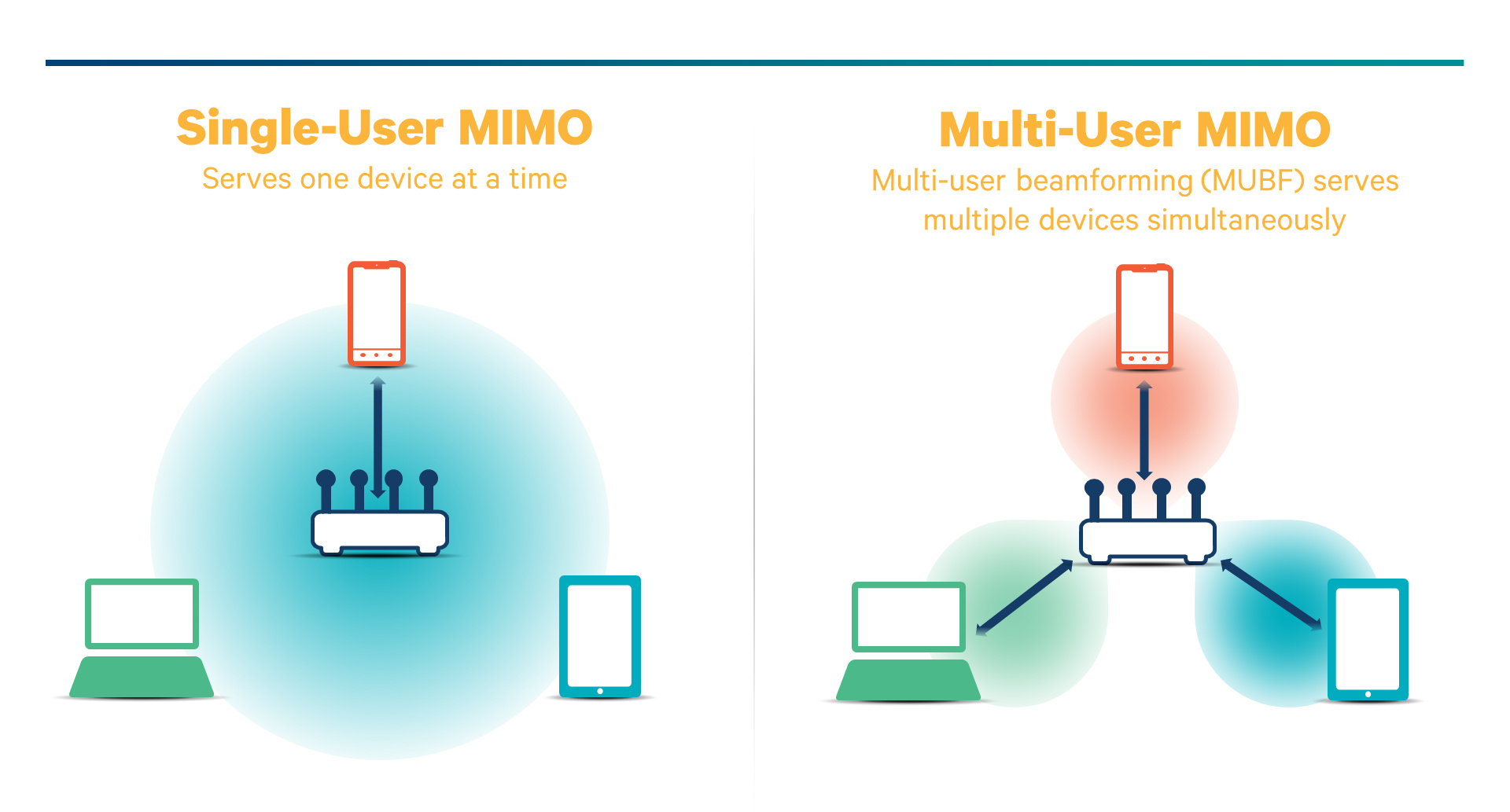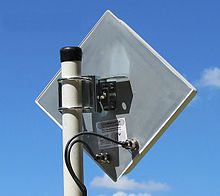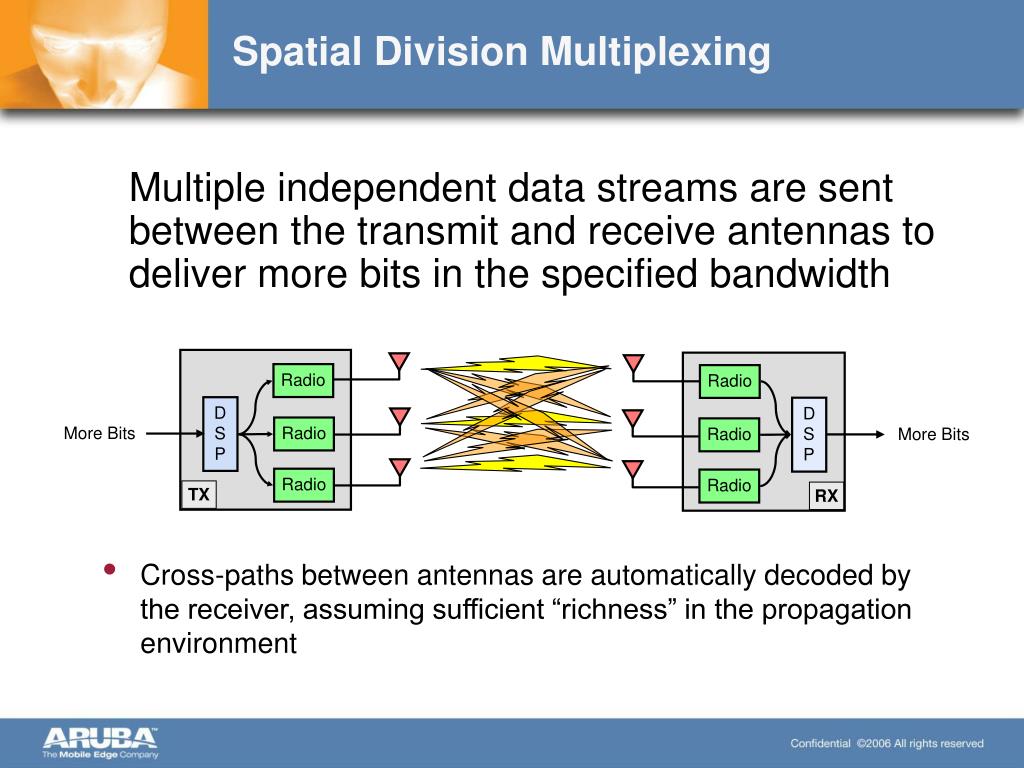Behold the technological marvel that is MIMO, or Multiple Input Multiple Output. This wireless communication technique employs numerous antennas both at the transmitter and receiver to bolster data transfer speed and reliability. By transmitting several signals simultaneously over one frequency channel, MIMO can amplify capacity while slashing errors in wireless networks.
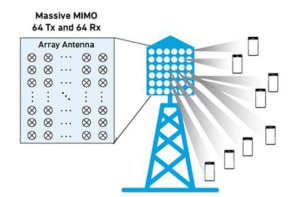
But wait, there’s more! Enter Multi-User MIMO (MU-MIMO), a savvy innovation leveraging the might of MIMO technology by allowing multiple users to transmit and receive data concurrently on diverse antennas. The result? An optimized use of available bandwidth with minimal interference between users. Spatial Multiplexing takes it up another notch by utilizing different antenna pathways to send separate streams of data and increase capacity.
And now for the pièce de résistance: Dirty Paper Coding (DPC). A potent coding technique employed by MU-MIMO systems that enables each user’s signal transmission sans interference from others’. DPC accomplishes this feat through pre-cancelation of any unwanted signals before transmission occurs – talk about higher throughput rates and improved system performance!
In conclusion, these cutting-edge techniques showcase how MIMO technology continues to push boundaries in advancing wireless communication capabilities – think MU-MIMO, spatial multiplexing, Dirty Paper Coding…and beyond!
Multi-User MIMO: How It Works and Its Advantages
Contents
- 1 Multi-User MIMO: How It Works and Its Advantages
- 2 Spatial Multiplexing: Increasing Capacity in MIMO Systems
- 3 Dirty Paper Coding: A Powerful Technique for Multi-User MIMO
- 4 Exploring MU-MIMO Systems: From Transceiver to Antenna
- 5 MIMO Diversity: Dealing with Interference and Improving Performance
- 6 Advanced MIMO Concepts: From Point-to-Point to MIMO Broadcast Channels
- 7 Maximizing Throughput in Multi-User MIMO Systems: User Scheduling and CSIT
Multi-User MIMO (MU-MIMO) is a perplexing technology that ignites burstiness in wireless communication systems. It’s like magic, using multiple antennas at both the transmitter and receiver ends to create spatial multiplexing and diversity techniques that enhance system capacity and performance. This enables different users to share the same frequency band without disrupting each other.
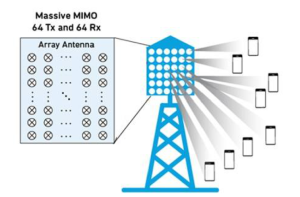
The most mind-boggling advantage of MU-MIMO is its ability to reduce interference in wireless networks. By allowing multiple users to transmit concurrently on the same channel, it reduces collisions and congestion leading to higher throughput and lower latency. Can you even imagine how this works? Moreover, MU-MIMO improves spectrum efficiency by utilizing idle resources more effectively – whoa!
To unleash the power of MU-MIMO, one must have a transceiver that supports simultaneous transmission from multiple antennas or antenna arrays. The number of antennas required varies depending on the number of concurrent users supported by the system while advanced signal processing techniques such as Dirty Paper Coding (DPC) can be used for optimal multi-user beamforming – talk about complexity!
In summary, Multi-User MIMO is an explosive technique for improving wireless network performance using parallel transmissions from multiple users while reducing interference through spatial multiplexing and diversity techniques. Its implementation requires a transceiver capable of supporting multiple antennas or antenna arrays along with advanced signal processing algorithms such as DPC for optimal beamforming – mind blown!
Spatial Multiplexing: Increasing Capacity in MIMO Systems
Spatial multiplexing, a technique employed in MIMO technology, has the power to amplify the capacity of wireless communication networks. The enigmatic process involves transmitting multiple data streams simultaneously by utilizing different antennas at both ends of the transmission line. With intricate processing algorithms, electronics on either side decode these signals and enable higher transmission rates.
Each antenna transmits an exclusive code that corresponds to a specific data stream in spatial multiplexing. Upon reception, the receiver uses its own set of antennas to receive these codes and processes them separately. By separating these codes on both ends, this peculiar method can transmit more information over identical bandwidths than traditional single-antenna systems.
This approach is particularly useful in MU-MIMO systems where multiple users are communicating with one another concurrently while maximizing throughput via user scheduling algorithms for downlink transmissions efficiently allocating resources among several receivers. Spatial multiplexing also enhances performance during uplink transmissions by enabling numerous users to transmit their respective data streams concurrently sans interference from other network users – quite astonishing!
Dirty Paper Coding: A Powerful Technique for Multi-User MIMO
Dirty Paper Coding is a technique that can boost the throughput of wireless communications in Multi-User MIMO systems. It’s an efficient method for distributing information across multiple spatial degrees of freedom, leading to higher data rates and improved performance.
The beauty of Dirty Paper Coding lies in its ability to combat correlation within multi-user MIMO channels. This pesky issue can arise from various factors, such as antenna spacing or transmitter placement. But by exploiting available degrees of freedom through signal distribution across different antennas, interference caused by correlated channels can be mitigated.
MIMO broadcast channels are another area where Dirty Paper Coding has proved effective. When one transmitter communicates with multiple receivers simultaneously, users may experience interference and decreased overall performance. However, this technique combined with appropriate user scheduling algorithms and channel state information (CSI) maximizes throughput while maintaining high-quality communication links among all users.
Overall, Dirty Paper Coding is an essential tool for improving the performance of MIMO MAC systems and other multi-user MIMO applications in complex wireless environments where maximizing throughput is critical. As research continues into advanced concepts like beamforming and massive MIMO technology, we expect techniques like Dirty Paper Coding to continue playing a vital role in shaping future wireless communication standards – leaving us perplexed yet bursting with excitement!
Exploring MU-MIMO Systems: From Transceiver to Antenna
The intricacies of MU-MIMO systems are not for the faint of heart. This cutting-edge technology utilizes multiple antennas at both the transmitting and receiving ends in order to enhance data transmission. Picture a point-to-point MIMO setup where two terminals engage in communication with each other using an array of antennas. The advantage? Data rates that surpass those found in traditional single-antenna systems.
But wait, there’s more! To achieve even greater data rates, MU-MIMO can utilize dirty paper coding (DPC). DPC is a complex signal processing technique that mitigates interference caused by concurrent transmissions from numerous users. By utilizing DPC, the base station can transmit signals simultaneously to different users on the same frequency band – talk about increasing system capacity!
In cellular networks like CDMA or LTE, uplink MU-MIMO takes center stage as several mobile devices transmit their signals at once to a base station equipped with multiple receive antennas. This results in improved spectral efficiency and reduced latency as more users can be served per unit time. Thanks to advances in antenna technology, compact devices such as smartphones and tablets have also been able to incorporate multiple antennas which has further boosted performance capabilities under these conditions.
MIMO Diversity: Dealing with Interference and Improving Performance
MIMO diversity, an indispensable tool for taming interference and bolstering the performance of MIMO systems, is a complex technique that demands careful consideration. By leveraging multiple antennas, base stations can transmit signals to numerous users simultaneously through either spatial multiplexing (SU-MIMO) or multi-user MIMO (MU-MIMO). But beware: such methods require meticulous design to mitigate user-to-user signal overlap.
Fortunately, there are techniques available for attenuating interference like precoding – linear transformation applied to outgoing signals before they reach the antenna. Applying this method effectively improves SINR at each receiver’s end. Additionally, dirty paper coding (DPC) enables optimal transmission rates by wiping out known sources of interference.
Determining the number of transmitting antennas plays an integral role in deciding the level of freedom that MIMO systems provide when multiple users share bandwidth using division multiple access (DMA). And channel state information at the transmitter (CSIT) allows beamforming schemes to be used efficiently while minimizing unwanted signal overlaps. Ultimately, embracing MIMO diversity yields substantial benefits in terms of wireless communication system capacity and reliability.
Advanced MIMO Concepts: From Point-to-Point to MIMO Broadcast Channels
The intricacies of advanced MIMO concepts are vast and multifaceted, with few aspects more crucial than the shift from point-to-point to MIMO broadcast channels. The transmission and reception of data by multiple users simultaneously presents a plethora of unique challenges that must be overcome. One approach is downlink user scheduling, which assigns each user a specific time slot for transmission based on their channel state information (CSI). However, obtaining precise CSI in multi-user scenarios can prove incredibly difficult.
Dedicated pilots from each user offer one method to surmount this challenge and estimate the CSI at the receiver. This enables more efficient signal processing techniques while enhancing overall reception quality significantly. Additionally, augmenting the number of receiver antennas can also heighten performance levels in multi-user MIMO systems.
However, extending MIMO from point-to-point to broadcast channels incurs an augmented complexity cost that requires careful consideration. While incorporating additional transmit antennas or receive antennas may improve performance levels substantially, it also increases hardware costs and necessitates supplementary signal processing capabilities. To circumvent these complexities while achieving high throughput rates still demands linear precoding techniques.
In conclusion, advanced MIMO concepts concerning broadcasting channels require diligent analysis regarding factors such as CSIR accuracy and hardware expenses. Utilizing dedicated pilots alongside linear precoding methods makes it possible to achieve top-tier multi-user transmissions without sacrificing efficiency or reliability in any manner whatsoever!
Maximizing Throughput in Multi-User MIMO Systems: User Scheduling and CSIT
The optimization of multi-user multiple input multiple output (MU-MIMO) system throughput hinges on two key factors: user scheduling and channel state information at the transmitter (CSIT). But what approach to user scheduling should be taken? Should we use round-robin, maximum capacity, or proportional fair allocation? Each method has its own set of trade-offs in terms of fairness, efficiency, and cost.
Adaptive user scheduling based on CSIT feedback is a popular method that takes into account current channel conditions for resource allocation. However, this requires accurate CSIT estimation – which can prove difficult due to interference cancellation techniques used by other users.
Moreover, encoding or beamforming schemes applied to transmitted signals are heavily reliant upon knowledge of the channel matrix between transmitters and receivers. Accurate CSIT estimation is therefore crucial in selecting an efficient encoding scheme that maximizes throughput while minimizing interference among users.
In conclusion, efficient user scheduling methods and accurate CSIT estimation play a critical role in MU-MIMO systems’ ability to maximize throughput by enabling optimal resource allocation and encoding selection.


